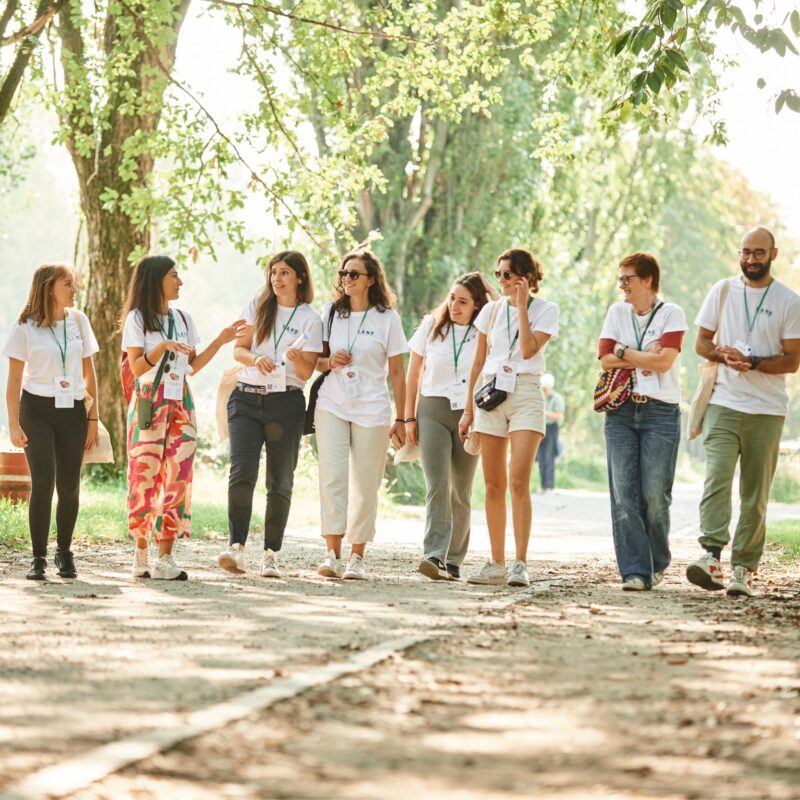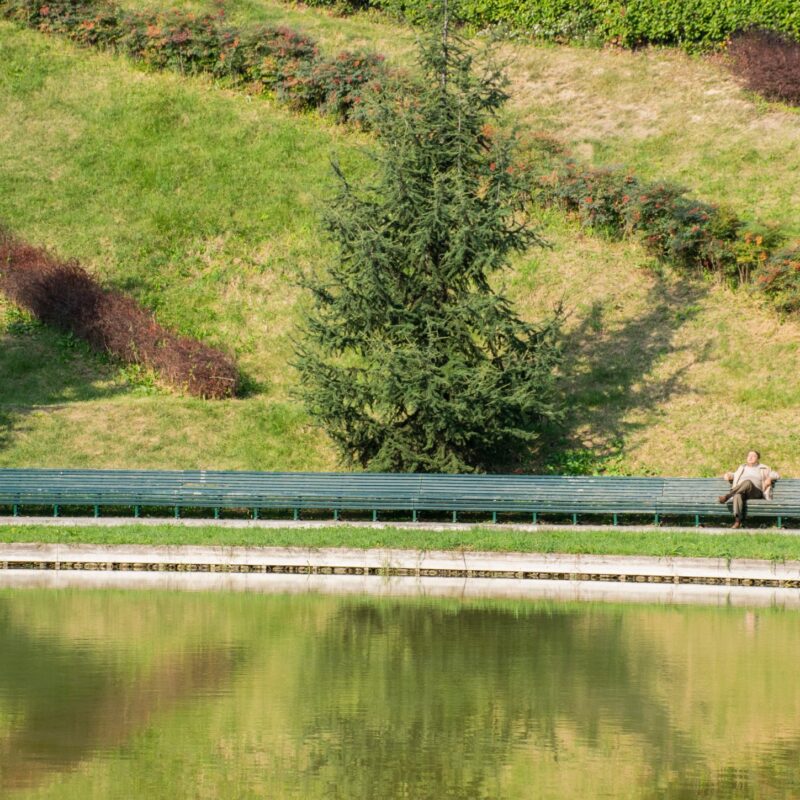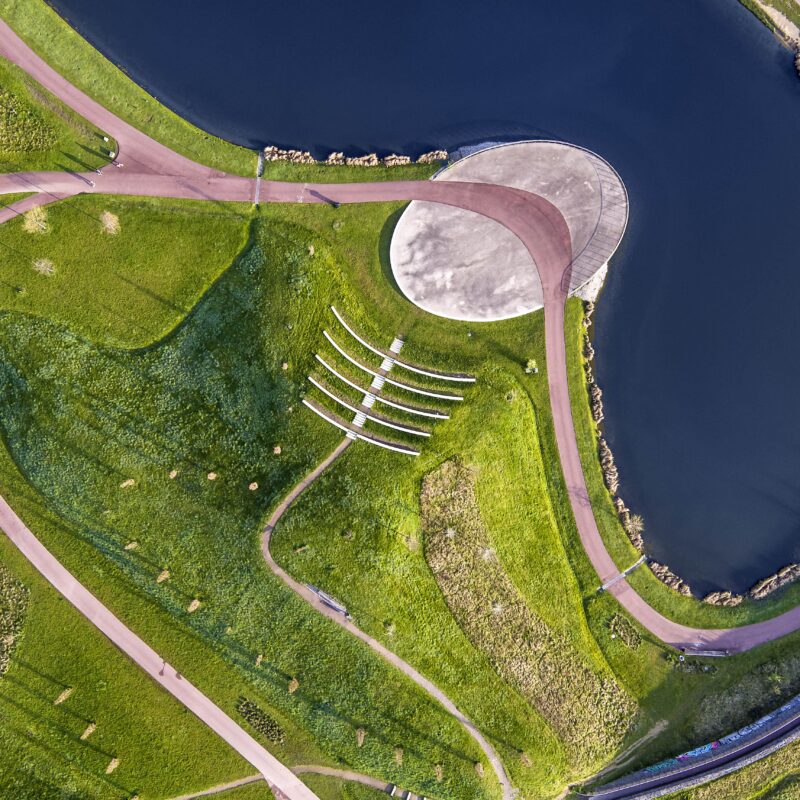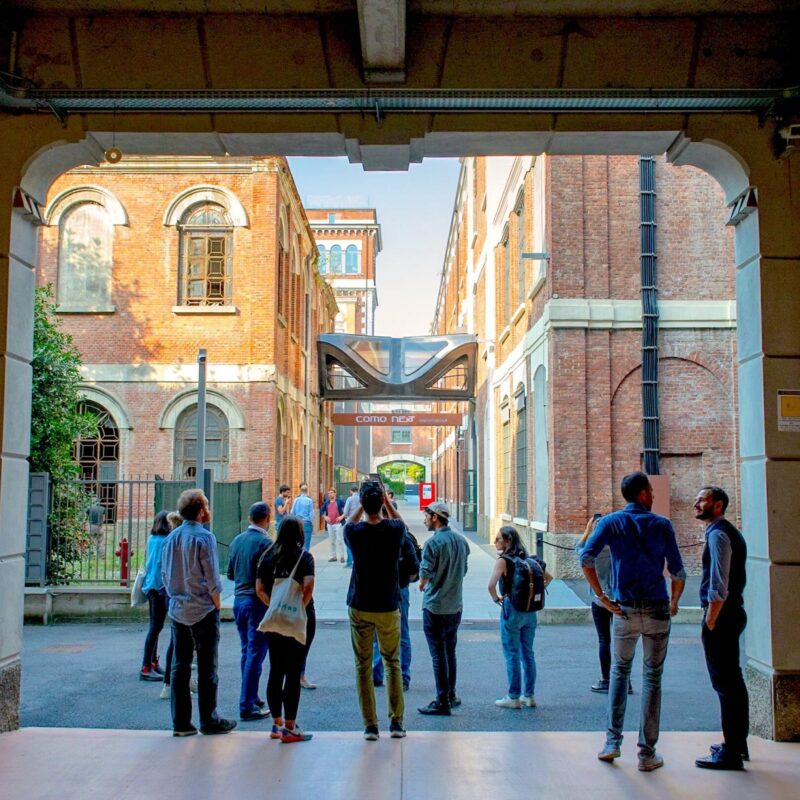
A New Normal
How nature’s parameters find their way into insurance concepts in the face of climate change

Andreas Moser, Munich Re Italy terrace, designed by LAND © Photo by Roberta Filippini
An exchange of ideas with Andreas Moser
Sometimes the path to the future winds through a terrace. In 2019, Andreas Moser, then-CEO of Munich Re Italy, sat down with Andreas Kipar and its landscape consultancy. The Swiss-born manager’s goal was to use a new, modern concept of office organization at the Milan headquarters to encourage employee creativity and inspiration. A discussion about openness led the LAND team to develop office modules that can be moved around on a terrace graced with natural features, creating space for multiple indoor and open-air uses.
This collaboration quickly led to a deeper exchange of ideas, including with the LAND Research Lab, regarding nature-based solutions (NBS). These solutions can at least partially mitigate the effects of natural disasters that occur more frequently as a result of climate change. For Andreas Moser, who is now Head of Digital Receivables Insurance and Financing Solutions for the Munich-based global reinsurance group, for which he’s creating a new corporate branch, it‘s an exciting topic. After all, emphasizes the 44-year-old, climate creates “some of the greatest risks for enterprises like insurance companies, because of the uncertainties and extremely high expected costs.”
He’s convinced that the sustainable use of natural capital in risk mitigation “will gain massively in importance in the future.” Over the past 20 years, Italy has had to pay out some 70 billion euros to control natural disasters, both earthquakes and weather-related events. These are problems that taxpayers must shoulder year after year. Government financial aid often continues for a long time, involving complex processes that can overwhelm beneficiaries. So why not organize public-private partnerships with insurers and reinsurers? It would certainly cost something, but instead of general taxes, wouldn’t it make a clear calculation possible and at the same time result in more efficient financing and claims settlements?
The sustainable use of natural capital will gain massively in importance in the future.

At first glance, you’d expect this to be extremely unpopular, because homeowners and property owners would have to pay an insurance premium and would only receive a benefit in the event of an actual loss. Yet we often overlook the fact that individual premium costs are now hidden by taxes, and are probably even higher than an actual premium would be. But efficient risk management also includes preventive measures, such as NBS. These are particularly useful for “visualizing risk mitigation in an attractive way.” For example, by making it clear that a park where I take walks and where my children play is also an area that might function as a floodplain once or twice a year. Risk management costs money, and as long as nothing goes wrong, it may even seem unnecessary. “If NBS also provide visible concrete benefits for citizens, these investments are easier to convey,” says Andreas Moser, who studied economics in Basel (including a master’s degree in risk management). Not to mention the fact that NBS would create new jobs in the environmental sector.
It‘s extremely important for insurance companies to have a solid basis for calculating premiums. Moreover, we now have models that can predict the consequences of various climate change scenarios. The risk-reducing effect of a particular NBS can be considered in the risk calculation. To this end, risk-reducing nature-based solutions would be provided by the landscape planner, with a calculation of their effects. Close communication between landscape architects, government agencies, insurers and reinsurers is critical to ensure a shared understanding. “Direct joint dialogue improves mutual understanding.” Direct networking is thus a prerequisite for future planning and thinking about NBS.
As a catalyst for this thinking “the pandemic offered a perfect opportunity for societal change.” So we have a chance to reflect, to pause – let’s take advantage of it. Because “climate change is going to result in a new normal, and all of us in the industrialized world will have to adapt.” This new normal can scarcely be imagined without nature-based solutions. And on a small scale, it can also be enriched by discussions about a terrace.
Text based on conversations between Andreas Moser, Andreas Kipar and Stella-Zoë Schmidtler in July 2020 and July 2021.
Read other Articles from this Edition






